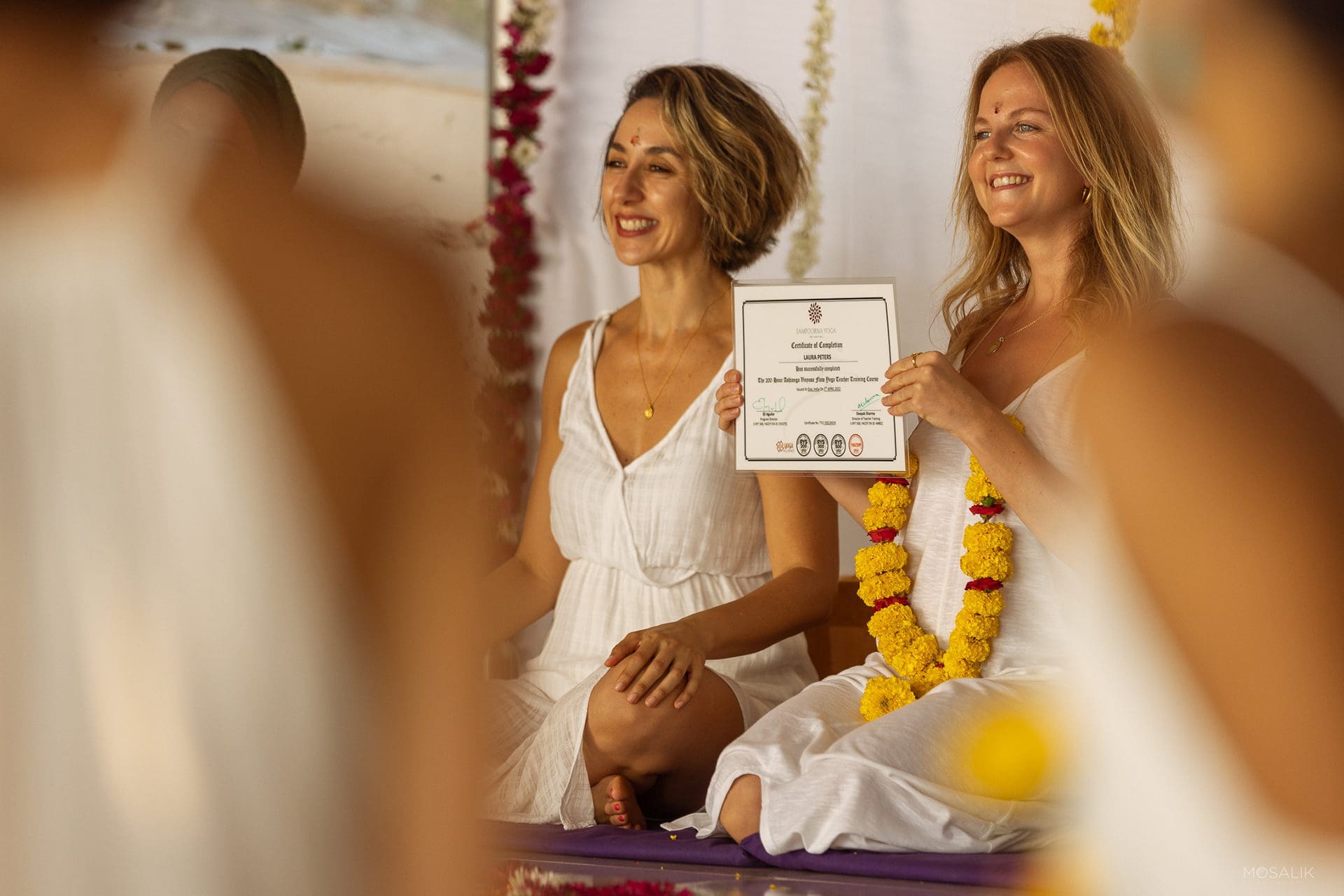Yoga Teaching Tips for Yoga Teachers
‘Yoga is not just a practice, but a way of life’ is something most practitioners discover during a yoga teacher training program. Learning to adapt a yogic lifestyle helps you step into the role of a yoga teacher in an efficient and confident way. Becoming a yoga teacher comes with its set of responsibilities. You would have most-likely just gone through a transformative journey and gained a depth of knowledge, practices and tools to guide others. So, how do you take on the role of a teacher in a seamless yet effective way? What are the best practices, tips and tricks that can help you? Let’s take a look at a few yoga teaching tips.

- Stay true to your practice: First and foremost is staying dedicated to your practice. To be a great yoga teacher, your practice comes first. Before you can teach yoga asanas or pranayama to students, you must practice them yourself. You can either join another yoga class where you continue to practice and progress under the guidance of other teachers or practice on your own. Staying true to your practice will help you understand how a posture should look and feel, how to adapt modifications, and provide the right cues. Furthermore, your own practice will help you connect with yourself and be an authentic yogi. inner-work will help you grow tremendously and this will show in your teaching.
- Adapting a yogic lifestyle: Try to continue following a yogic lifestyle after your yoga teacher training course is completed. You would have learnt about a balanced routine, mindful diet, importance of movement, and more during your yoga instructor training course. It’s important to continue following these practices and habits to stay balanced. Keep reading and learning more about yoga philosophy even after your course. Over a period of time, you will notice changes within you, such as being patient and accepting of people and situations. You will be more positive and sensitive to situations, enabling a better connection to yourself and others. This will be evident in your teaching and your students will be more comfortable and confident to learn from you as well as approach you with concerns. Remember, yoga is not just about balance on the mat. It’s about mental, emotional and physical balance off the mat too.
- Breath: Our breath is the most essential aspect of our being. In yoga, it is the center of all practices. For you, as a teacher, focusing on the breath during class and outside, will help you stay calm, balanced and centered. If you are nervous during a class, simply take deep breaths and feel your body relax. When teaching students, include breath in your asana as well as meditation instructions. Add pranayama practices to your sessions in the beginning and/or in the end. Conscious breathing activates deep changes on an internal level. Your students will love the experience while also improving their focus, concentration, mental strength, immunity, lung health and more.
- Demonstrate and instruct: Don’t just explain a yoga asana or a breathing practice. Demonstrate each posture or practice to show your students how it is done while explaining how it should feel, the anatomy of the pose, modifications, breath cues, and more. Give students personal attention by offering adjustments when they are trying the pose. Spend time designing thoughtful sequences and flows, practice them yourself and see if you need to make any changes. Only then will you know if your students will be able to do the same.
- Know your students: Before you start a class, know who you are teaching. Are they beginners? What is their flexibility and strength level? Is a student recovering from an injury? Is someone suffering from an ailment? To design sequences that students can benefit from, it is important to take the time to understand the student’s history and goals of practicing yoga. This way you can create sequences to include what is most needed, whether it is poses for flexibility, balance, strength, stress-relief or breathing techniques for stamina. You can make relevant modifications and include a blend of warm-ups, standing poses, twists, inversions, backbends, forward-bends and calming breath practices, meditation or Yoga Nidra, and more. This will greatly help you prepare for your class, add yoga philosophy tid-bits that are relevant, among others, to make the class unique and interesting.
- Be approachable: Communicate with students by taking the time at the beginning and end to speak to them. Ask them how they feel, whether they liked the class, which parts of the class they like, what would they want more of, etc. During class, speak clearly in a tone that is firm yet soothing. Most yoga teacher training courses will include short modules on how to modulate your voice when teaching. This will help you learn how you should enunciate and communicate when providing instructions. Give yourself some time to practice and master this effortlessly.
- Listen, learn and grow: Invest in regular yoga teacher training courses, continuing education and advanced courses. The more you learn, the more you grow. The more knowledge and practice you have, the more authentic and real your teachings will be. If you’ve done a 200-hour yoga teacher training, consider doing the advanced 300-hour yoga teacher training. Take up courses in Yoga Nidra, Pranayama, or other styles of yoga such as Yin Yoga. You can even take up short workshops or go for a yoga retreat. You will not only add more credibility to your name as a yoga teacher, but also have more experiences to share with your students.

As a yoga teacher, you have a great responsibility towards your students. They will look to you to improve their health and fitness, their lifestyle and overall well-being. Being a compassionate and authentic yoga teacher will only come with truly and wholly stepping into the role of a yogi. Follow these tips and with time you’ll begin shaping your own unique style as well as improving your confidence.

